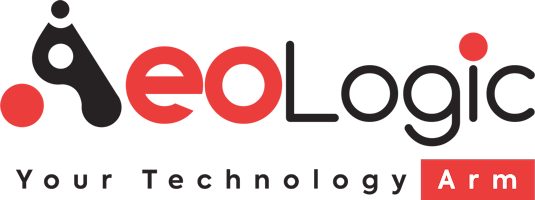It can be tough for many industries to know where their things are. RFID asset tracking is a smart way to help with this. This system uses RFID tags and radio waves. RFID systems make inventory management and asset care faster and simpler. You can get real-time data with these systems. This means you waste less time and avoid more mistakes. RFID asset tracking can change the way businesses watch over their things. Read this blog to see how RFID works, what parts you get in the system, how you can use it, and why it works better than old asset tracking ways.
![]()
Understanding RFID Asset Tracking
RFID stands for radio frequency identification. It is a tool that helps businesses keep a watch over their physical assets in a fast and easy way. The system has RFID readers, tags, antennas, and software. All of these things work together so you can get and share data with others right away.
The main benefit of RFID is that it helps people manage their work in a better way. It stores important details like where things are, how they are used, and what shape they are in on the RFID tags. Many businesses use this radio frequency identification system all over the world now. It helps them save money, work faster, and do better in inventory management. With this, it is simple to keep track of physical assets, and it is much safer and quicker than before.
What Is RFID and How Does It Differ From Other Tracking Technologies?
Tracking technologies are important in asset management. A lot of people want to know what makes Radio Frequency Identification (RFID) different. Unlike barcode asset tracking, RFID uses radio waves. It does not need to read a barcode or have visible lines. Because of radio waves, you get to collect data from more than one rfid tag at once. You do not need to see each rfid tag for it to work. This makes asset tracking faster and easier. Radio frequency identification offers a new way for asset management compared to barcode asset tracking.
Barcode asset tracking does not work well when barcodes fade, get scratched, or torn. This can make the data wrong or unreliable. RFID is much better for asset tracking. It uses rfid tags that store unique electronic product codes safely. These tags use signals to talk with an rfid reader through the air. So, you get more and better data than with just a barcode asset.
RFID lets you collect a lot of data quickly. It uses a wide signal range, so it can find info from many things at the same time. This is good for asset tracking. It helps your team work fast and get things right, even when you have lots of items. The speed, good tracking, and fewer mistakes are why many people now choose RFID instead of old ways, especially when they have to look after high-value things in their work.
Key Components of an RFID Asset Tracking System
An RFID asset tracking system needs a few basic things to work right. The rfid reader is the main part at the center of the system. It has antennas that pick up signals. The rfid tags store important details about the asset, such as its place or its state. Some of these tags use a power source from outside, and some tags have a power source built in them. This is what helps asset tracking work smoothly in an rfid asset tracking setup.
The rfid reader picks up data and sends it to a computer database. The information gets sorted so it can be used to help make better choices. Many of these systems can connect to a dedicated mobile app. This lets people get updates in real time on their phone.
When these parts work well together, inventory tracking does not stop. This lets businesses save time and get more done. A company can check on their supply chain or find out where an asset is any time they need. All of this makes rfid asset tracking more steady and helps it grow with the business. That is the reason why people use rfid systems in many jobs and companies for things like asset tracking, rfid asset, and the supply chain.
![]()
How RFID Asset Tracking Works
The rfid tracking system helps people keep an eye on things without much effort. This system makes use of rfid tags, and it can give out real-time details about where an item is and what shape it is in. These details go from the rfid tags by using radio waves to readers that are placed at different important spots.
After the readers get the signals, the information goes right to a main computer database. This data collection process lets you see updates as they happen. You get clear asset information on many platforms. The rfid tracking system makes it easy to track the movement of goods in places like logistics. It also helps keep equipment safe in healthcare. It does all of this well, making things work better wherever you use it.
The RFID Asset Tracking Process Flow
An rfid tracking process follows four easy steps:
- Tagging Assets: First, you need to put a rfid tag with its own unique electronic product code on the thing you want to keep track of.
- Signal Transmission: The antenna checks for signals from rfid tags that are inside the set signal range.
- Data Reading: The rfid reader gets the data from these tags. It can read this information without using any wires.
- Database Integration: All this data goes into a computer database. You can use and look over the information there.
This rfid tracking flow lets people keep up with items in the supply chain with no trouble. It helps to cut out doing jobs by hand and keeps the asset management process safe and good. The system helps people use their workflows better. You will know where their things are at every time.
System Architecture: Tags, Readers, and Software
The main parts of rfid systems are tags, readers, and software. These three things work together to make the system run. Here is a quick look at each part:
| Component | Details |
| RFID Chip | Holds details, like a serial number or state, on rfid tags. |
| RFID Reader | Picks up data from tags using either a handheld device or a fixed setup. |
| Dedicated Software | Looks at and saves the data, and helps with tasks like access control or tracking inventory. |
Each part works together with the others to help you keep an eye on all your assets at any time. Your business can use an rfid reader when you need to move around for your work. You can also use rfid systems to look at your data. This makes sure you always know where your things are, so you can use your resources in a good way.
Types of RFID Tags Used in Asset Tracking
There are different types of rfid tag that help with many asset tracking needs. Passive rfid tags do not have their own battery. They get power from the reader. This kind of tag is good to use for simple inventory tracking tasks.
Active rfid tags come with their own battery inside. They can send out signals over a long distance. If you want to track something in real-time or see where it is from far away, these active rfid tags do a good job.
There are also semi-passive rfid tags. These tags use some parts of passive rfid and some parts that need a battery. The battery inside them is small. The tags work well when you have to track things in certain places. This is good if you cannot use normal passive rfid tags.
If you use the right rfid tag, it can help your business do better. To get good results, make sure the tag fits what you need.
Active vs. Passive vs. Semi-Passive RFID Tags
To understand RFID tags, you need to look at the three main types:
- Active RFID: These tags have an internal battery that acts as a power source. They can send a signal as far as 150 meters. You will find active RFID good for tracking things that move a lot, like in vehicle tracking.
- Passive RFID: These tags do not have their own power source. They work when a reader is close by. Passive RFID tags are light in weight and are often used for inventory tracking. They also cost less and can last a long time.
- Semi-Passive RFID: This kind comes with an internal battery to help power the tag. But, it still needs a nearby reader to work. It also has an antenna. A semi-passive RFID tag can be good when you want to know even more, like checking the area around something.
It is important to pick the right tag. This can help make asset tracking simple and smooth, work the way you want, and also be worth the money you spend.
Choosing the Right Tag Type for Your Assets
Choosing which tags to use for your work depends on the type of asset you need to track, how much you want to track, and how much you have in your budget. If you only have to know when an asset is close, many asset managers pick passive RFID or passive tags. These are good options because they do not cost much and can last a long time.
For real-time tracking, it is best to use active tags. These tags help when you need to look after high-value items. They are good for bigger stock levels or when things move around a lot.
Sometimes, you have to check on things in a different way. For example, when shipping something that should stay at a set temperature, it is better to use semi-passive RFID than passive rfid.
When people check how the work goes and what is the usual thing in the industry, they can see if RFID gives good value for their inventory tracking. This helps to get more accuracy and gives room to grow if things change in the future.
Common Use Cases for RFID Asset Tracking in the United States
The use of RFID technology is common in many industries in America. A good example of its versatility is in rfid asset tracking. In supply chain management, people turn to rfid asset tracking to speed up inventory tracking. This makes the work safer and more efficient. When you use rfid asset tracking, you also cut down on the need for human intervention. That means there will be fewer mistakes. It’s also used for vehicle tracking. This helps all the work get done right and on time.
RFID asset tracking is now a big part of how people in logistics and retail keep track of things. The system can be made bigger or smaller to match what any business wants. That is why people in many important businesses use RFID asset tracking as their first pick to watch over their assets. This way of asset tracking keeps getting better all the time. More parts of the economy start to use RFID asset tracking each year.
RFID in Manufacturing and Industrial Asset Management
Manufacturers use RFID systems in their work with asset management. These systems help them watch the movement of goods. By doing this, they can find and stop costly delays before they happen. This helps things run well and on time.
RFID helps them tag items safely and makes sure every step in the process is smooth. It stops mistakes that can happen when you enter data by hand. Companies use these systems to track things like tools, machines, or materials. This is important to keep production running on time.
When businesses use rfid technology in their work, it makes things simple and clear. This helps a lot with inventory management. It also lets their work go on without many stops. Because of this, they get to use the resources they have in the best way. This makes sure they are fast and smart in what they do.
RFID Applications in Healthcare and Hospitals
In the healthcare industry, passive RFID is used to track things like medical tools and patient records. Hospitals use this to lower human error. When automatic systems handle assets, work in every department becomes easier and faster.
RFID systems give people useful information, like where things are right now. This helps to make work better and faster. RFID systems also track temperature. This way, items such as plasma stay safe when people move them from one place to another.
When hospitals start to use RFID the same way everywhere, they keep things safer and save money. This lets people who work in healthcare do their jobs better and follow the rules. It also helps them give good care to people.
Benefits of Implementing RFID Asset Tracking
Choosing RFID asset tracking gives some great benefits. Automated RFID systems do not need a lot of help from people. This makes inventory management better and easier to do. The RFID asset tracking also helps you get more accurate results with less human intervention. So, using RFID systems for asset tracking can really improve how you manage your inventory.
Businesses get real results fast. They use real-time data in a better way and see the supply chain more clearly. Companies also have more control over everyday tasks. It does not matter if you run a small business or a large one—RFID asset tracking solutions work for everyone. With this asset tracking system, there is less waste and bigger profits. It helps the business grow over time and makes sure they do well in the long run.
Improving Accuracy and Reducing Losses
Adding RFID makes tracking much better. It lets companies get data without people having to do it. This helps to lower human error, so the checks are more steady and right. There are some industries that need to do things fast, and they get a lot from this.
There are real-time updates that help cut down the chances of losing important items. These updates let you see if something is lost or put in the wrong spot while you move things. When companies use rfid systems, they keep their money safe. At the same time, they make sure their work keeps running smoothly at every level.
RFID is good to have for keeping stocks safe and making things run better. It helps people in different industries work well with their money, time, and other things.
Boosting Operational Efficiency and ROI
RFID helps to make work better and faster. Unlike barcode labels, rfid systems can find many tags from far away. They also do not slow people down when they work.
The return on investment from rfid systems is high. This is because they help cut down waste and help with smoother work steps. Many companies see results fast, especially in the supply chain. RFID systems make it easier to do more and stress less. They help you share what you have where it is needed the most.
RFID is simple to set up, and you can see that it works well in many places. A lot of people say it is the key if you want your business to grow and save money at the same time.
Conclusion
RFID asset tracking helps businesses be faster and more accurate in their work. If you understand how rfid technology is used and know about the different tags, you can use them in many places. This can help you stop losing things and make asset management much better. There are many good things about rfid asset tracking. You get better tracking, can manage your inventory well, make everything easier, and get more back for your money. If you want to use rfid asset tracking at work, make sure you choose the parts and systems that fit what you need. If you want to see how asset tracking and rfid asset tracking can help with your asset management, talk to us today and get a full check about it.
Frequently Asked Questions
Is RFID asset tracking secure against data breaches?
Yes, rfid asset tracking gives strong security by using advanced access control. Today, rfid systems use coding for asset tracking to keep your data safe. This helps bring down the risk of data leaks, so your information is protected when it goes from one place to another.
How far can RFID tags be read in real-world conditions?
RFID tags do not all have the same coverage. Passive RFID tags can reach up to one meter for their signal range. Active RFID tags work for longer distances and can go up to 150 meters. You need to use the right rfid reader to make tracking better, even when you are on tough ground.
Are there privacy concerns with RFID asset tracking?
Yes, there are some worries about privacy. But these worries go down when there are good rules in place. If the data collection process uses the right steps and there are strong safety measures in rfid technology, then groups can track things in a safe way. This means they do not put people’s privacy at risk.
Can RFID work with existing inventory management systems?
Yes, rfid tracking works well with old inventory management software. You can connect the rfid reader to your computer database. This setup gives you solutions that can grow as your needs do. It helps keep things running without a lot of hard work or big changes.
What are the ongoing maintenance requirements for RFID systems?
Taking care of rfid systems is important. You have to check the rfid readers often to make sure they work right. If needed, set up the tags again. Also, remember to look at the power source from time to time. It is good to update the software as well. This will help your rfid systems last longer. A well-kept system will work better and for more years.






